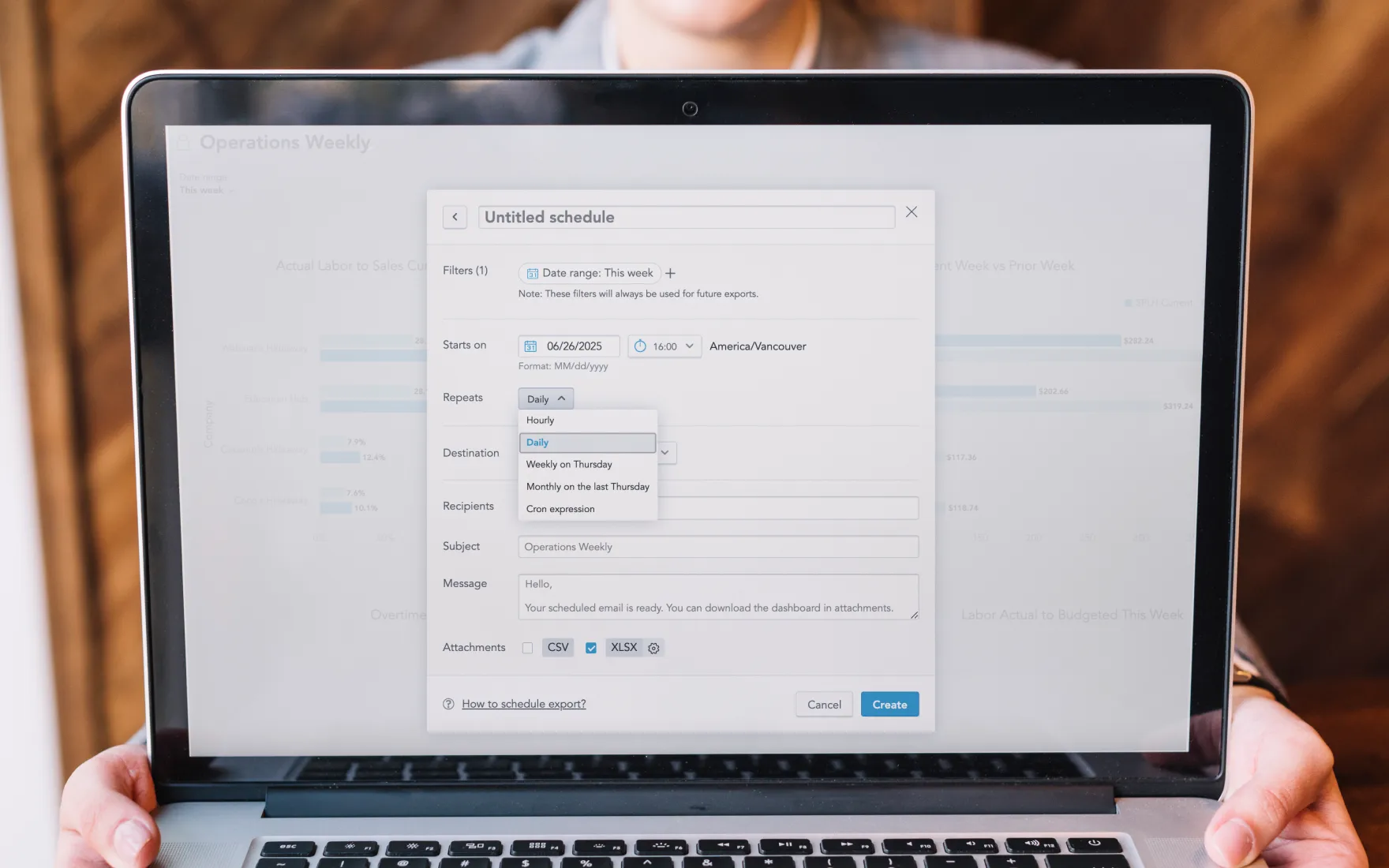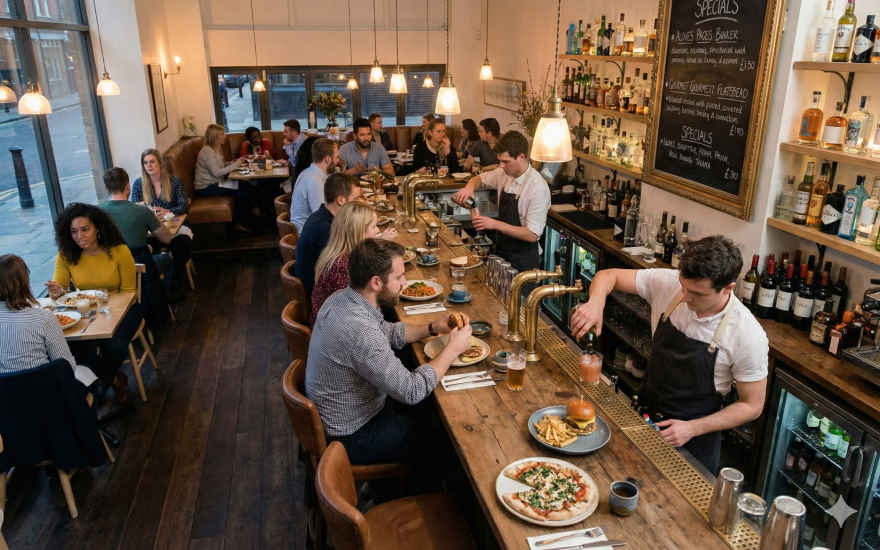Break Roster: A Guide for Restaurants to Improve Team Efficiency

Employee breaks are a vital part of any restaurant’s daily operations. Not only do they ensure compliance with labor laws, but they also help maintain staff morale and productivity. Yet, managing break times effectively can be challenging, especially during busy service hours. This is where the break roster can be a lifesaver — it’s an essential tool for organizing staff breaks without disrupting the flow of service and operations.
In this article, we’ll define what a break roster is, explain how it differs from a break schedule, and discuss best practices for managing both effectively.
What Is a Break Roster?
A break roster is a structured plan that outlines when employees take their breaks during a shift. It includes specific time slots allocated to each team member and ensures that breaks are distributed evenly and in compliance with labor laws. Break rosters help managers balance the need for breaks with operational demands to ensure that the right number of staff is always available to handle customer needs.

What Is the Difference Between a Break Roster and a Break Schedule?
Though the terms "break roster" and "break schedule" are often used interchangeably, they have distinct meanings:
Break Roster
- Definition: A detailed allocation of break times assigned to individual employees during their shifts.
- Focus: Organizes breaks for the entire team, ensuring coverage at all times.
- Use Case: Often used in high-paced work environments like restaurants, where even a 5-minute overlap in breaks can affect service quality.
Break Schedule
- Definition: A broader plan outlining the general time frames during which breaks are allowed or expected to occur.
- Focus: Provides a framework for when breaks can happen but lacks the individual assignments found in a roster.
- Use Case: Suitable for workplaces where staffing levels remain consistent and precise timing is less critical.
Why a Break Roster Matters in the Restaurant Industry
In the fast-paced world of restaurants, every minute counts. A well-crafted break roster is more than just a compliance tool; it’s a strategic asset that ensures smooth operations while prioritizing employee well-being. Here’s a deeper dive into why a break roster is so important:
1. Ensures Full Coverage During Shifts
A break roster helps managers allocate breaks without compromising service quality. By staggering break times, restaurants can:
- Maintain Customer Service Standards: Avoid situations where too many employees are on break at the same time, leading to long wait times or poor customer experiences.
- Prepare for Peak Hours: Strategically plan breaks around busy periods to ensure enough hands are on deck during rushes.
- Optimize Teamwork: Ensure there’s always a mix of experienced and new team members available to handle various tasks.
2. Boosts Employee Satisfaction and Morale
Employees are the backbone of any successful restaurant. When their needs are respected, they’re more likely to perform at their best. A break roster:
- Promotes Fairness: Guarantees that breaks are distributed equitably across the team, preventing resentment or burnout.
- Builds Predictability: Helps employees plan their day better, knowing exactly when they can rest or grab a meal.
- Encourages Loyalty: Demonstrates that the business values their well-being, fostering a positive workplace culture.

3. Ensures Compliance with Labor Laws
In the restaurant industry, non-compliance with labor regulations can lead to significant fines, legal action, and reputational damage. A break roster:
- Tracks Compliance: Helps managers ensure that every employee gets the breaks they’re entitled to, whether it’s a 30-minute meal break or shorter rest periods.
- Provides Documentation: Creates a record of when breaks were scheduled and taken, which can act as a paper trail in audits or disputes.
- Reduces Legal Risks: Keeps the business safe from lawsuits related to labor law violations.
4. Improves Overall Efficiency
Efficiency isn’t just about speed; it’s about ensuring every aspect of the business runs smoothly. A break roster:
- Prevents Overlap Issues: Avoids multiple employees taking breaks simultaneously, leaving the floor understaffed.
- Maximizes Productivity: Allows employees to recharge during less busy times, so they return to work energized and focused.
- Simplifies Management: Reduces the chaos of last-minute decisions or employees requesting breaks at inconvenient times.
5. Supports Employee Health and Well-Being
The restaurant industry is known for long hours and high-pressure environments. Without proper breaks, employees may experience:
- Burnout: Fatigue from overwork can lead to mistakes and poor performance.
- Physical Strain: Continuous movement, standing, or lifting can take a toll without periodic rest.
- Mental Health Challenges: Regular breaks give employees a chance to de-stress, ultimately improving their mental health.
All in all, restaurants can create a healthier, more sustainable work environment for their staff by prioritizing breaks with a structured roster.
How to Properly Create and Use a Break Roster
1. Assess Operational Needs
Start by identifying your restaurant’s busiest and slowest periods. Determine how many employees need to be on the floor or in the kitchen during peak times to maintain service quality. Use this analysis to decide when employees can take breaks without affecting operations.

2. Understand and Comply with Labor Laws
Review local, federal, and state/provincial labor laws to ensure you’re providing employees with the required break times. For example, California mandates a 30-minute meal break for every 5 hours worked and a paid 10-minute break for every 4 hours worked. Non-compliance can lead to fines or legal disputes, so this step is crucial.
3. Leverage Scheduling Software
Tools like Push’s automatic scheduler makes it easy to schedule breaks. Automate break assignments, avoid overlapping breaks, and maintain labor law compliance. Scheduling software also allows for real-time adjustments when staffing changes occur unexpectedly.
4. Assign Breaks Strategically
Allocate breaks in a way that maintains seamless coverage. For instance:
- Stagger breaks for key roles (e.g., one server breaks while another covers their section).
- Rotate break schedules weekly to ensure fairness and prevent favoritism.
- Plan breaks for less-busy periods to avoid compromising customer service during rush hours.
5. Communicate and Monitor the Break Roster
Share the break roster with your team in advance—preferably at the start of the week or shift. Post it in a visible location or use a digital platform to keep everyone informed. During shifts, monitor adherence to the roster and make adjustments as needed, such as when staff are running late or emergencies arise.
Download Your Free Break Roster
Managing employee breaks during a busy shift can be a challenge. Missed breaks, overlapping shifts, and compliance headaches can disrupt operations and morale. That’s why we’ve created the Break Roster Template, a free, ready-to-use break roster to streamline your scheduling process.
This template helps you:
- Clearly organize and manage break times.
- Stay compliant with labor laws by tracking breaks effectively.
- Avoid shift coverage gaps by balancing employee breaks.
Take the stress out of scheduling and keep your team energized. Download our free Break Roster Template, and make managing breaks easier than ever!
Final Thoughts on Improving Team Efficiency
A well-organized break roster is essential not only for maintaining efficiency and compliance but also for boosting team morale in your restaurant. Streamlining break schedules is an effective way to keep operations running smoothly while making sure your staff remains well-rested and productive.
Ready to take your break management to the next level? Book a demo with Push Operations to see how our all-in-one automated payroll software helps restaurants simplify scheduling, improve compliance, and optimize team efficiency.



